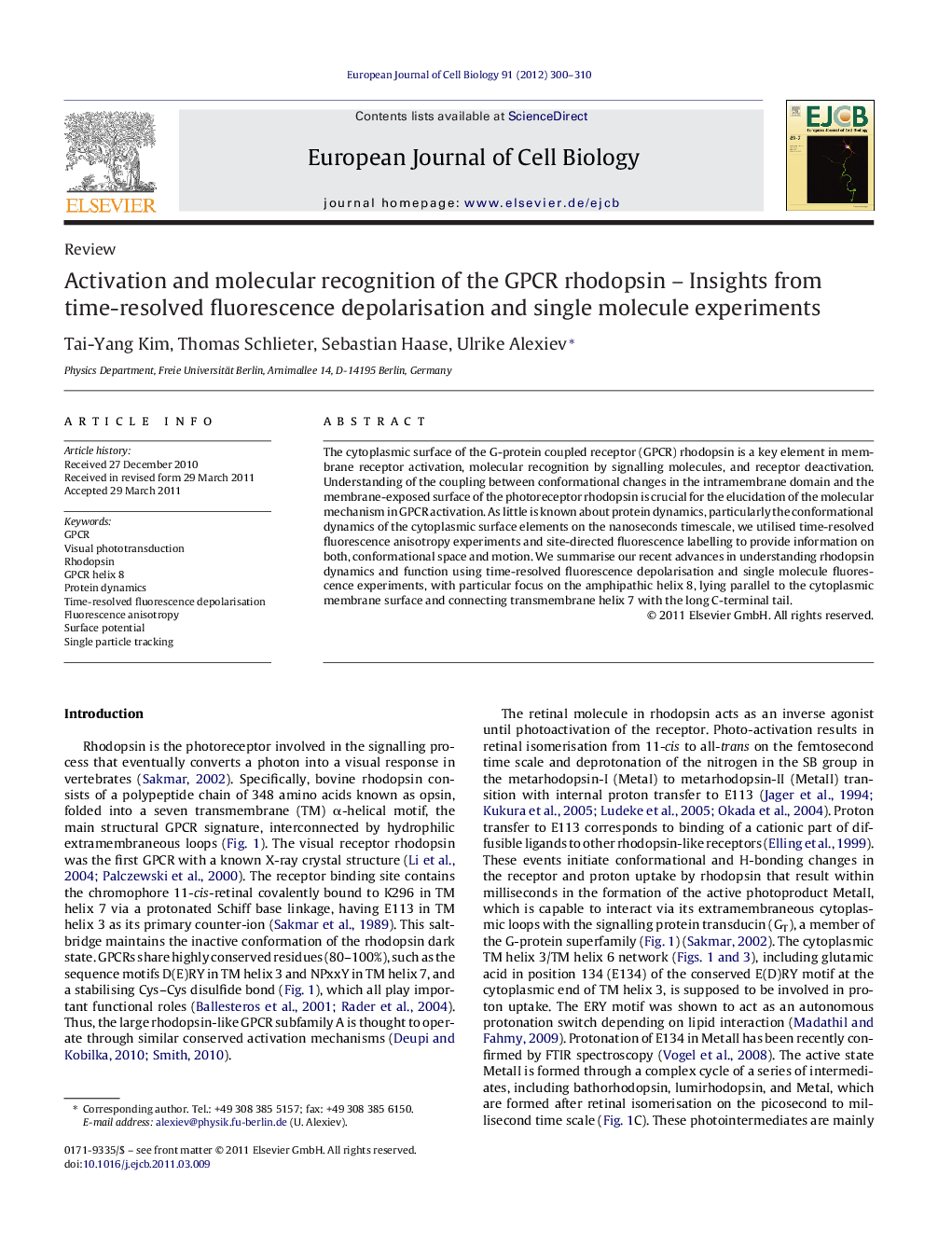| Article ID | Journal | Published Year | Pages | File Type |
|---|---|---|---|---|
| 2178433 | European Journal of Cell Biology | 2012 | 11 Pages |
The cytoplasmic surface of the G-protein coupled receptor (GPCR) rhodopsin is a key element in membrane receptor activation, molecular recognition by signalling molecules, and receptor deactivation. Understanding of the coupling between conformational changes in the intramembrane domain and the membrane-exposed surface of the photoreceptor rhodopsin is crucial for the elucidation of the molecular mechanism in GPCR activation. As little is known about protein dynamics, particularly the conformational dynamics of the cytoplasmic surface elements on the nanoseconds timescale, we utilised time-resolved fluorescence anisotropy experiments and site-directed fluorescence labelling to provide information on both, conformational space and motion. We summarise our recent advances in understanding rhodopsin dynamics and function using time-resolved fluorescence depolarisation and single molecule fluorescence experiments, with particular focus on the amphipathic helix 8, lying parallel to the cytoplasmic membrane surface and connecting transmembrane helix 7 with the long C-terminal tail.
